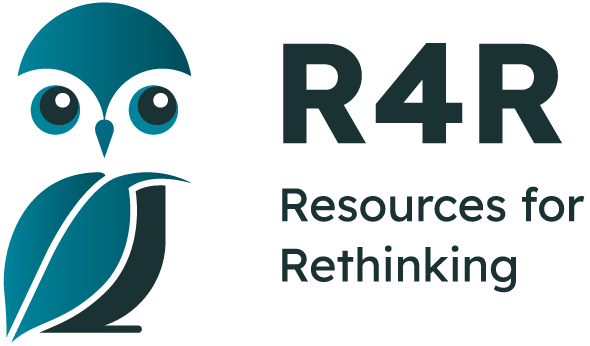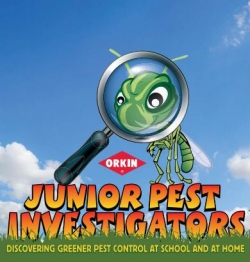- Home
- Tutorial
- Resource Guides
- Focus Areas
- LSF Programs
-
Professional
Development - Review Process
-
A project of LSF

Search for Resources
Description
Junior Pest Investigators Teacher’s Guide
In this engaging classroom resource young learners take on the role of Pest Investigators to track down solutions to common pest problems that minimize harm to human health and the environment. Along with way students uncover interesting facts about the culprits and recognize that most of the organisms considered pests perform important and essential functions in the web of life. The many learning activities included in the four lessons are effectively supported with a wide range of printable teaching aids.
Lesson 1. Eek-ology: - Explores the double lives of pests.
Students begin by exploring their feelings about organisms typically considered pests by responding to picture cards and ‘fascination fact’ sheets. Students then learn about the harm caused by various pests while investigating crime scenes described in a number of Who Done It mysteries. These short stories reveal that most pests are only guilty of being in the wrong place. Through a shared reading and sorting activity, students recognize that these same organisms we consider pests perform vital functions in the web of life.
Lesson 2. Habitat Hot Spots: – Explains why pests show up where they’re not wanted.
Students begin by learning about the concept of habitat and how the availability of food, water and shelter is what attracts pests. They then explore the classroom to identify potential hot spots. Students then discuss various methods by which these areas can be made people friendly as opposed to pest friendly. Action is then taken by employing safe and environmentally friendly tools & methods to clean up the hot spots. Finally the class develops a Green Sweep chart to use in taking action at home.
Lesson 3. In Step With IMP- Examines how to reduce and eliminate exposure to harmful chemicals using an Integrated Pest Management approach.
After learning what IMP means students are asked to use what they have learned about pests and hot spots to come up with a likely list of tools and methods that would be on an IMP to-do list. Students then discuss which items on the list should be performed by children and which ones should be reserved for adults only. Finally they are introduced to the chemical components of IMP, safety rules governing their use and the cautionary words found on product labels.
Lesson 4. It’s In Your Hands. Taking action and sharing what was learned with others.
The lesson begins with an engaging activity designed to synthesize and celebrate what has been learned about pests and pest management. Students then brainstorm ideas and decide on an action project they will complete to educate others about the importance of implementing healthy and safe methods of pest control at home and at school.
Each lesson includes an interesting wrap-up activity to emphasize key points and the resource package includes a comprehensive list of assessment tools, support materials and ideas to extend the learning.
General Assessment
What skills does this resource explicitly teach?
- Organization skills
- Decision making
- Pest prevention & removal
- Reading labels
- Product safety
Strengths
- a colorful and engaging resource
- employs effective pedagogy (experiential, action oriented, inquiry based)
- offers a comprehensive set of teaching materials including assessment tools
- includes an excellent bibiliography of support materials
Relevant Curriculum Units
The following tool will allow you to explore the relevant curriculum matches for this resource. To start, select a province listed below.
- Step 1Select a province
- Alberta
- Step 2Select a grade level
- Kindergarten
- Step 3Select a subject
- Physical Education & Health
- Step 4Relevant matches
- Safety: A lifetime of optimal well-being is supported by prioritizing health and safety
- Science
- Step 4Relevant matches
- Earth Systems: Understandings of the living world, Earth, and space are deepened by investigating natural systems and their interactions.
- Grade 2
- Step 3Select a subject
- Health Education
- Step 4Relevant matches
- Exploring connections strengthens our understandings of relationships to help us make meaning of the world.
- Physical Education & Health
- Step 4Relevant matches
- Safety: A lifetime of optimal well-being is supported by prioritizing health and safety
- Grade 3
- Step 3Select a subject
- Health Education
- Step 4Relevant matches
- Exploring connections strengthens our understandings of relationships to help us make meaning of the world.
- Physical Education & Health
- Step 4Relevant matches
- Safety: A lifetime of optimal well-being is supported by prioritizing health and safety
- British Columbia
- Step 2Select a grade level
- Grade 2
- Step 3Select a subject
- Physical Education & Health
- Step 4Relevant matches
- Physical and Health Education: Adopting healthy personal practices and safety strategies protects ourselves and others
- Manitoba
- New Brunswick
- Step 2Select a grade level
- Grade 1
- Step 3Select a subject
- Health Education
- Step 4Relevant matches
- Explore Your World: Diversity and Social Responsibility
- Explore Your World: Well-Being
- Science
- Step 4Relevant matches
- Explore Your World: Diversity and Social Responsibility
- Explore Your World: Well-Being
- Social Studies
- Step 4Relevant matches
- Explore Your World: Diversity and Social Responsibility
- Explore Your World: Well-Being
- Grade 2
- Step 3Select a subject
- Health Education
- Step 4Relevant matches
- Explore Your World: Well-Being
- Science
- Step 4Relevant matches
- Explore Your World: Well-Being
- Social Studies
- Step 4Relevant matches
- Explore Your World: Well-Being
- Grade 3
- Step 3Select a subject
- Health & Career Planning
- Step 4Relevant matches
- Personal Wellness: Wellness
- Newfoundland & Labrador
- Step 2Select a grade level
- Grade 1
- Step 3Select a subject
- Health Education
- Step 4Relevant matches
- Understanding Me and My World
- Science
- Step 4Relevant matches
- Needs and Characteristics of Living Things
- Grade 2
- Step 3Select a subject
- Health Education
- Step 4Relevant matches
- Understanding Me and My World
- Grade 3
- Step 3Select a subject
- Health Education
- Step 4Relevant matches
- : Understanding Me and My World
- Northwest Territories
- Step 2Select a grade level
- Grade 1
- Step 3Select a subject
- Nova Scotia
- Step 2Select a grade level
- Grade 1
- Step 3Select a subject
- Health Education
- Step 4Relevant matches
- Health Education 1
- Science
- Step 4Relevant matches
- Science 1: Needs of Living Things
- Grade 2
- Step 3Select a subject
- Health Education
- Step 4Relevant matches
- Health Education 2
- Nunavut
- Ontario
- Step 2Select a grade level
- Grade 1
- Step 3Select a subject
- Physical Education & Health
- Step 4Relevant matches
- Health and Physical Education: Healthy Living
- Science & Technology
- Step 4Relevant matches
- Life Systems: Needs and Characteristics of Living Things
- Grade 2
- Step 3Select a subject
- Physical Education & Health
- Step 4Relevant matches
- Health and Physical Education: Healthy Living
- Grade 3
- Step 3Select a subject
- Physical Education & Health
- Step 4Relevant matches
- Health and Physical Education: Healthy Living
- Prince Edward Island
- Step 2Select a grade level
- Grade 1
- Step 3Select a subject
- Health Education
- Step 4Relevant matches
- Wellness Choices
- Science
- Step 4Relevant matches
- Needs and Characteristics of Living Things
- Grade 2
- Step 3Select a subject
- Health Education
- Step 4Relevant matches
- Wellness Choices
- Quebec
- Step 2Select a grade level
- Grade 1
- Step 3Select a subject
- Science & Technology
- Step 4Relevant matches
- Living things
- Grade 2
- Step 3Select a subject
- Science & Technology
- Step 4Relevant matches
- Living things
- Saskatchewan
- Step 2Select a grade level
- Grade 1
- Step 3Select a subject
- Science
- Step 4Relevant matches
- Needs & Characteristics of Living Things
- Grade 3
- Step 3Select a subject
- Health Education
- Step 4Relevant matches
- Investigating Health Knowledge and Information: Apply Decisions
- Investigating Health Knowledge and Information: Informed Decisions
- Yukon Territory
- Step 2Select a grade level
- Grade 2
- Step 3Select a subject
- Physical Education & Health
- Step 4Relevant matches
- Physical and Health Education: Adopting healthy personal practices and safety strategies protects ourselves and others
Themes Addressed
Ecosystems (3)
- Appreciating the Natural World
- Biodiversity
- Interdependence
Human Health & Environment (1)
- Environmental Contaminants & Health Hazards
Sustainability Education Principles
| Principle | Rating | Explanation |
|---|---|---|
| Consideration of Alternative Perspectives | Satisfactory | A clearly stated goal of the resource is to promote the benefits of Integrated Pest Management. |
Consideration of Alternative Perspectives:
| ||
| Multiple Dimensions of Problems & Solutions | Good | The resource does a good job in integrating the environmental and health (social) dimensions related to the damage caused by pests and methods of pest control. Clear opportunities exist for teachers to incorporate the economic cost associated with these issues. |
| Multiple Dimensions of Problems & Solutions: Effectively addresses the environmental, economic and social dimensions of the issue(s) being explored.
| ||
| Respects Complexity | Good | The resource does an excellent job in demonstrating the complexity of balancing the need to limit damages caused by pests and at the same time protect human health and the environment |
| Respects Complexity: The complexity of the problems/issues being discussed is respected. | ||
| Acting on Learning | Very Good | Age-appropriate opportunities for action experience are provided throughout the resource. |
| Acting on Learning: Learning moves from understanding issues to working towards positive change — in personal lifestyle, in school, in the community, or for the planet
| ||
| Values Education | Good | The first lesson provides an excellent values clarification exercise, the outcomes of which are made relevant throughout the resource. |
| Values Education: Students are explicitly provided with opportunities to identify, clarify and express their own beliefs/values. | ||
| Empathy & Respect for Humans | Poor/Not considered | Not considered. Not relevant to the scope and theme of this resource. |
| Empathy & Respect for Humans: Empathy and respect are fostered for diverse groups of humans (including different genders, ethnic groups, sexual preferences, etc.). | ||
| Personal Affinity with Earth | Very Good | A key goal of this resource is to emphasize that all organisms, even pests deserve our respect for the important roles they play in the web of life. |
| Personal Affinity with Earth: Encourages a personal affinity with -the natural world.
| ||
| Locally-Focused Learning | Very Good | The content, activities and outcomes are all highly relevant to the lives and experiences of the learners. |
| Locally-Focused Learning: Includes learning experiences that take advantage of issues/elements within the local community.
| ||
| Past, Present & Future | Poor/Not considered | Not considered. |
| Past, Present & Future: Promotes an understanding of the past, a sense of the present, and a positive vision for the future. | ||
Pedagogical Approaches
| Principle | Rating | Explanation |
|---|---|---|
| Open-Ended Instruction | Good | Many of the activities are based on investigations in which students draw their own conclusions. However IPM is presented as the best model for pest management and control. |
| Open-Ended Instruction
: Lessons are structured so that multiple/complex answers are possible; students are not steered toward one 'right' answer. | ||
| Integrated Learning | Satisfactory | |
| Integrated Learning: Learning brings together content and skills from more than one subject area
| ||
| Inquiry Learning | Good | |
| Inquiry Learning: Learning is directed by questions, problems, or challenges that students work to address.
| ||
| Differentiated Instruction | Good | While no specific accommodations are suggested based on ability, this resource does offer a wide range of learning activities to support different learning styles. |
| Differentiated Instruction: Activities address a range of student learning styles, abilities and readiness.
| ||
| Experiential Learning | Very Good | This is an obvious strength of the resource where learning is applied in authentic situations at school, at home and in the community. |
| Experiential Learning: Authentic learning experiences are provided
| ||
| Cooperative Learning | Satisfactory | |
| Cooperative Learning: Group and cooperative learning strategies are a priority.
| ||
| Assessment & Evaluation | Very Good | Substantial attention has been paid to assessment. A number of suggestions and instruments are offered to teachers. |
| Assessment & Evaluation: Tools are provided that help students and teachers to capture formative and summative information about students' learning and performance. These tools may include reflection questions, checklists, rubrics, etc. | ||
| Peer Teaching | Good | |
| Peer Teaching: Provides opportunities for students to actively present their knowledge and skills to peers and/or act as teachers and mentors.
| ||
| Case Studies | Good | The mysteries provided serve as effective case studies appropriate for very young learners. |
| Case Studies: Relevant case studies are included. Case studies are thorough descriptions of real events from real situations that students use to explore concepts in an authentic context. | ||
| Locus of Control | Satisfactory | While the lesson content has been provided to students, they are given a good deal of control over procedure. |
| Locus of Control: Meaningful opportunities are provided for students to choose elements of program content, the medium in which they wish to work, and/or to go deeper into a chosen issue. | ||

